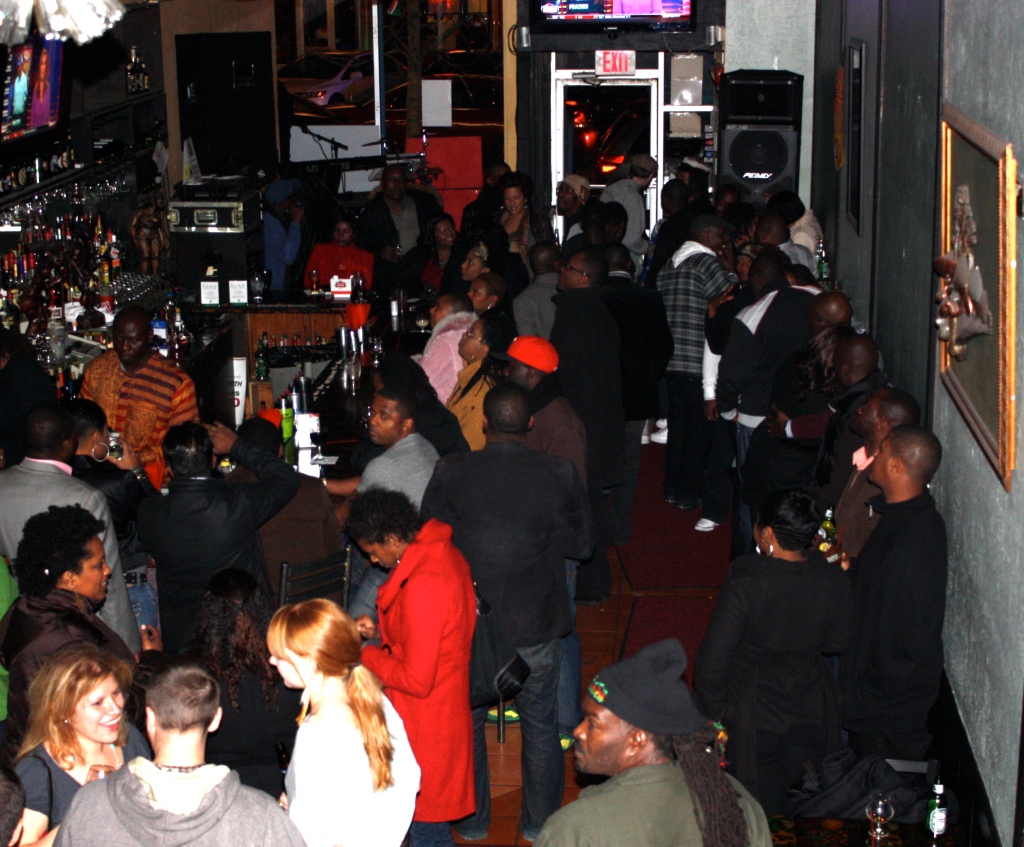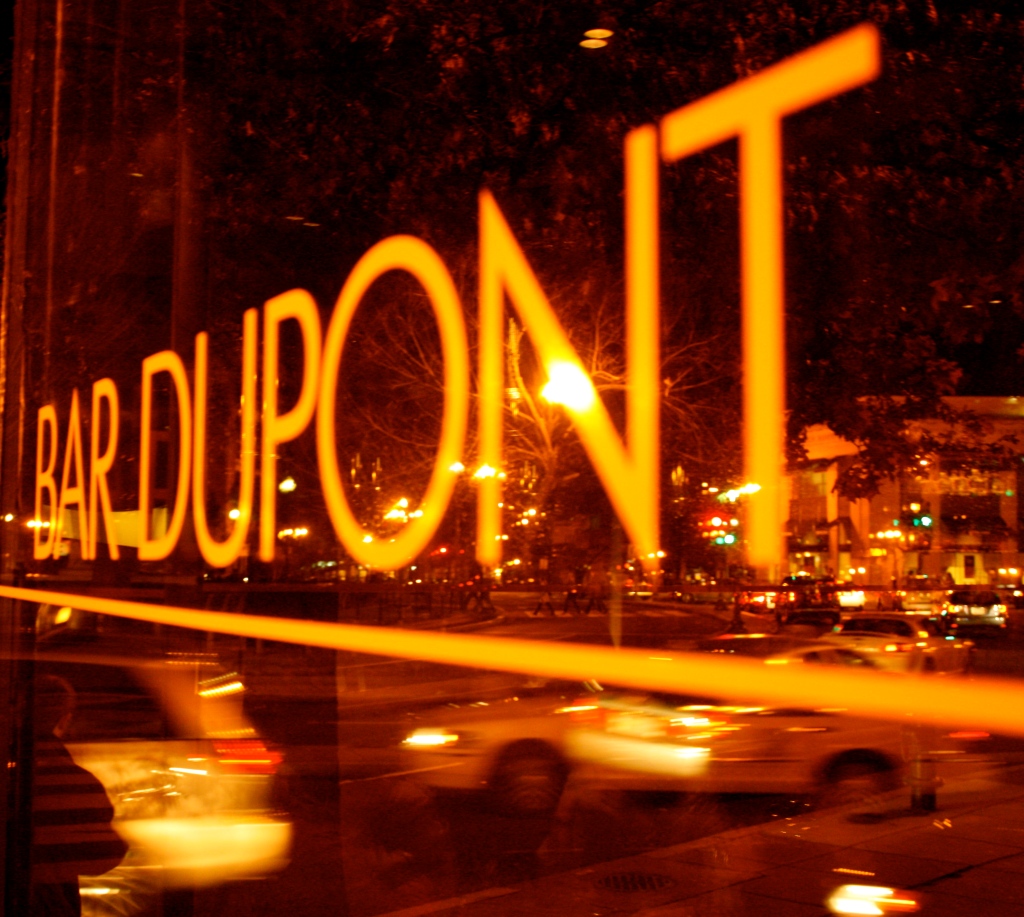Alana Rudkin
Visual Literacy
Final Project Journal
12.6.2010
When people think of the District of Columbia, images of the White House, Washington Monument, Capitol and countless museums often come to mind. Since DC is our nation’s capitol, people often equate it (rightfully so) with politics and governmental agencies. However, what many people do not think about when they think of DC is its vibrant and unique night life in countless neighborhoods throughout the District. The general lack of knowledge about DC’s night life is what inspired my project. The purpose of my photo essay is to open people’s eyes up this relatively under-explored aspect of DC. By showing the diverse people, venues and cultures in the three neighborhoods I photographed, I hope to inspire people to go out and experience DC’s night life for themselves.
My original plan was to photograph Dupont Circle, Adams Morgan and U-Street, however in my final project I substituted U-Street with Georgetown to capture more diversity in the neighborhoods. As stated above, my goal was to capture the unique characteristics of the night life scene in these three neighborhoods. The first place I photographed was Adams Morgan, and after the shoot I was slightly discouraged and frustrated. I did not feel like I was able to truly capture what made Adams Morgan different from any other neighborhood. I had a lot of pictures of people and the street, but there was no way to distinguish that these people and this street were in Adams Morgan! I was stressed out and tempted to change my final project all together. However, after I met with my professor she picked out my two strongest photographs from Adams Morgan and told me to focus on capturing images that somehow convey which neighborhood I was photographing. For example capturing a street sign or a venue with the neighborhoods name in it. Once I established what neighborhood I was in, then I could capture the people within that neighborhood. After that meeting I was significantly less stressed out and felt confident that I could complete my final project.
My project was shot over a two day period. I photographed Adams Morgan on Saturday November 29th from 11pm to 12:30am, and then I photographed Dupont and Georgetown Saturday December 4th from 11pm to 3:00am. To prepare for my project, I made a list of the places in each neighborhood that I considered to be the most popular and well known. I figured that if I photographed popular places then people would just know what neighborhood I was photographing. Well, this didn’t exactly work out as I had planned. Shortly after I began photographing, I came to the realization that not everyone necessarily goes out in these neighborhoods and therefore would not know the “popular” places. I remembered the advice I got from my professor about photographing places that contain the name of the area first and then capturing the people within that neighborhood. Thus, at least one photograph from each neighborhood contains the name of the neighborhood itself. I think this was the best way to ensure that everyone knew which neighborhoods were photographed.
I also prepared for my final project by looking at photographs by Robert Doisneau, a famous 2oth century French photographer who used street photography to capture the daily life in the city. His photographs illustrated the culture, atmosphere and people of France. I wanted to emulate his style of being able to capture people in the moment, when they have no idea they’re being photographed. I think I did an okay job capturing people in the moment, however it is something I would like to improve on if I were to do this project again. My vision of photographing people pouring out of night clubs at 3am or going crazy on the dance floor didn’t exactly come true. I was told in a number of places that I wasn’t allowed to photograph without a contract with the venue, which was annoying, but its okay. I was still able to sneak some shots in at the Reef in Adams Morgan before I was asked to leave because I didn’t have a contract! I have never actually been asked to leave a bar before, so that was a new and fun experience.
Another problem I encountered was my own discomfort with photographing people I didn’t know. I felt awkward and like people were wondering why I was photographing them. This had a negative impact on my photographs, specifically in Adams Morgan, the first place I shot. I kept trying to hide my camera to photograph people or I would quickly take a photo without focusing the camera and then the picture would be blurry. However, the more I photographed the more comfortable I became. It was cool! By the end of the second night of my shoot I felt like a real photographer. People even stopped and asked me to take their photograph. That is how I got the picture of the people dressed up in Georgetown. I really enjoyed going out from the prospective of a photographer!
Over all, I am satisfied with the final product of my photo essay on DC night life. I was able to complete my objective of visually conveying the diverse people and places in three different neighborhood’s night life. My final project is not that much different that my original idea with the exception of photographing Georgetown instead of U-Street. It worked out really well that I photographed Adams Morgan one week then met with my professor then photographed Dupont and Georgetown the following week because I was able to correct the mistake I made in Adams Morgan when I photographed the other two neighborhoods. With the help of my professor, I was able to over come my fear and stress of not being able to distinguish the neighborhoods in my photographs. Although I was initially timid about photographing people without them knowing, I over came this obstacle by continuing to photograph. The more I photographed, the more natural it felt.
I am most proud of my photograph of Bar Dupont and the Georgetown Saloon. I am disappointed that I was not able to capture more candied photographs of people in bars and night clubs like the one in the Georgetown Saloon. If I were to do this project again I would try to focus more on the people. However I do think that I have a nice balance of people and places in the seven photographs I chose for my final project. This project has taught me that a truly good photograph does not come with one click of the camera. I learned to plan the angel and frame of my shots, and to take as LOTS of photographs because it is better to have too many photographs than not enough. Now that I am more comfortable with the camera, I would definitely do this project again! I truly enjoyed going out and photographing DC’s night life as opposed to being immersed in the scene itself.











